Gem Profile- What's Druze
I think I've already let you know how much I love rocks. I think what I love most about rocks is the processes that create them. There are so many varieties, colors, structures and types of rocks it's almost mind-boggling. Even more amazing though are the sometimes violent and sometimes quiet ways rocks can be formed or changed over time.
One process that I love the outcome of is the formation of Druse on or in rock. Druse, pronounced drooz , is the small sugar-looking crystals that form on the outside of some rock and on the inside of others either through a sedimentary or volcanic process.
One process that I love the outcome of is the formation of Druse on or in rock. Druse, pronounced drooz , is the small sugar-looking crystals that form on the outside of some rock and on the inside of others either through a sedimentary or volcanic process.
Drusa was the name used by Saxon miners to describe the small crystals lining the sides of rock cavities as early as the 1750s. Drusy, Druzy, Druse and Druze are all different spellings for the same thing, though druse and drusy are more commonly used in geological terms, due to druze being a religious sect in Syria with its members being called druzys; however, either spelling is acceptable.
How Druse Forms
Druse that forms on the outside of rock is usually caused by precipitation in sedimentary processes, where groundwater saturated with dissolved silicates or carbonates floods a rocky area and slowly, over time, crystals form on the surface of the rock. This process can also form geodes under specific circumstances. Geodes form when a cavity in a rock, or even a stump, is filled with saturated water and crystals form in the space. When the water drains away, a crystal matrix is left behind and a geode is formed.
Druse that forms on the inside of volcanic rocks happens when a lava flow begins to cool and the gasses within the lava form bubbles. These bubbles are then filled with water, either groundwater or hydrothermal solution, that is again saturated with silicates or carbonates. Over time, the druse begins to grow within the bubble, or vug. After the bedrock is weathered away, geodes are left behind.
Jelena Louie netted this blue druzy in wire and created a necklace around it, winning the 2012 Druzy Contest on Wirejewelry.com.
Druse that forms on the outside of rock is usually caused by precipitation in sedimentary processes, where groundwater saturated with dissolved silicates or carbonates floods a rocky area and slowly, over time, crystals form on the surface of the rock. This process can also form geodes under specific circumstances. Geodes form when a cavity in a rock, or even a stump, is filled with saturated water and crystals form in the space. When the water drains away, a crystal matrix is left behind and a geode is formed.
Druse that forms on the inside of volcanic rocks happens when a lava flow begins to cool and the gasses within the lava form bubbles. These bubbles are then filled with water, either groundwater or hydrothermal solution, that is again saturated with silicates or carbonates. Over time, the druse begins to grow within the bubble, or vug. After the bedrock is weathered away, geodes are left behind.
Jelena Louie netted this blue druzy in wire and created a necklace around it, winning the 2012 Druzy Contest on Wirejewelry.com.

Types of Druse
One of the most common types of druse is quartz which gives us clear crystals reminiscent of sugar-coated jelly candy. Another type of druse is the purple hue of amethyst crystals, green of uvarovite, and even rainbow druse from the rainbow pyrite and all colors in between. Like other stones, heat treating can change the color of the crystal matrix forming druse and change the color in fun ways from bright pinks, fluorescent purple and will sometimes change just the host rock, leaving the druse its natural color.
Metallic coatings like titanium, platinum, or gold are done the same way mystic topaz is made, with a vapor coating in a vacuum chamber. These treatments and enhancements make for some fun and beautiful druzys! Drusies used in jewelry making are most commonly geodes that have been cut and calibrated to use as cabochons maximizing the beauty of the druse within.
Titanium druzy wrapped by Joan Madouse
One of the most common types of druse is quartz which gives us clear crystals reminiscent of sugar-coated jelly candy. Another type of druse is the purple hue of amethyst crystals, green of uvarovite, and even rainbow druse from the rainbow pyrite and all colors in between. Like other stones, heat treating can change the color of the crystal matrix forming druse and change the color in fun ways from bright pinks, fluorescent purple and will sometimes change just the host rock, leaving the druse its natural color.
Metallic coatings like titanium, platinum, or gold are done the same way mystic topaz is made, with a vapor coating in a vacuum chamber. These treatments and enhancements make for some fun and beautiful druzys! Drusies used in jewelry making are most commonly geodes that have been cut and calibrated to use as cabochons maximizing the beauty of the druse within.
Titanium druzy wrapped by Joan Madouse

Druse and the metaphysical
Druse crystal is said to enhance the properties of the stone it is formed on or in, helping to get rid of any negative feelings or thoughts, directing them away from you. Druzy crystals are also said to heal feelings of worry, self-doubt, and pessimism or any other negative thoughts and emotions. Placing a drusy crystal in your home can help bring in feelings of happiness and joi de vivre.
Caramel-brown druzy pendant wrapped by Joan Madouse
Druse crystal is said to enhance the properties of the stone it is formed on or in, helping to get rid of any negative feelings or thoughts, directing them away from you. Druzy crystals are also said to heal feelings of worry, self-doubt, and pessimism or any other negative thoughts and emotions. Placing a drusy crystal in your home can help bring in feelings of happiness and joi de vivre.
Caramel-brown druzy pendant wrapped by Joan Madouse

Where is Druzy found?
Druzy and geodes are found all over the world, but the most common areas of mining are the United States, Brazil, Australia, China, Russia and parts of Africa... okay, so all over the world! Geode Road Trip; if you're in for an adventure, there are several places in the United States to find geodes! The Hauser geode beds near Blythe, California are ancient volcanic ash beds. The geodes here are beautiful with different colors of agate, mostly hues of blue, within the gray stones and well defined banding within the rock.
Another great place is Utah at the Dugway geode beds. Here you can find geodes in a range of colors from white quartz, amethyst and all colors of agate. These geodes are formed through volcanic processes, while the following are through sedimentary. In the Keokuk region of Missouri, Iowa and Illinois, you can find geodes of chalcedony, calcite, quartz and banded agate in all colors of the rainbow. Kentucky, near Dannville and Hall's Gap, gives us light pink amethyst and banded agate while in the limestone of the Mississippi River valley we find quartz, calcite and chalcedony.
Emilie Jefferson wrapped this druzy angel, named Gabriel.
Druzy and geodes are found all over the world, but the most common areas of mining are the United States, Brazil, Australia, China, Russia and parts of Africa... okay, so all over the world! Geode Road Trip; if you're in for an adventure, there are several places in the United States to find geodes! The Hauser geode beds near Blythe, California are ancient volcanic ash beds. The geodes here are beautiful with different colors of agate, mostly hues of blue, within the gray stones and well defined banding within the rock.
Another great place is Utah at the Dugway geode beds. Here you can find geodes in a range of colors from white quartz, amethyst and all colors of agate. These geodes are formed through volcanic processes, while the following are through sedimentary. In the Keokuk region of Missouri, Iowa and Illinois, you can find geodes of chalcedony, calcite, quartz and banded agate in all colors of the rainbow. Kentucky, near Dannville and Hall's Gap, gives us light pink amethyst and banded agate while in the limestone of the Mississippi River valley we find quartz, calcite and chalcedony.
Emilie Jefferson wrapped this druzy angel, named Gabriel.

Caring for Druzies
Drusys are beautiful and dynamic stones with an interesting and fun heritage. Care should be taken when making jewelry out of drusy, they're not very good for rings and bracelets, but do great in pendants. Clean with a soft brush and gentle care, though the crystal matrix is fairly sturdy you don't want to clean it off with a lot of elbow grease or an ultrasonic bath. Just as another wonder of geology; it takes approximately 240 million years to form a geode, so you are truly wearing a piece of the amazing processes of planet we call home.
Drusys are beautiful and dynamic stones with an interesting and fun heritage. Care should be taken when making jewelry out of drusy, they're not very good for rings and bracelets, but do great in pendants. Clean with a soft brush and gentle care, though the crystal matrix is fairly sturdy you don't want to clean it off with a lot of elbow grease or an ultrasonic bath. Just as another wonder of geology; it takes approximately 240 million years to form a geode, so you are truly wearing a piece of the amazing processes of planet we call home.
Resources & Recommended Reading
DesertUSA
Druse on Wikipedia
DesertUSA
Druse on Wikipedia
Materials

Wire

Druzy Cabochons
Tools

WireJewelry - Ultimate Wire-Pliers Jewelry Pliers with Case, Set of 5
G15-20
- G15-20
- Lesson Quantity: 1.00 pieces
- Purchase Quantity: 1.00 each
- Price: $170.72
- Gold Club Price: $128.04

Bench Tools
- Category: General Education
- Technique(s): General Education







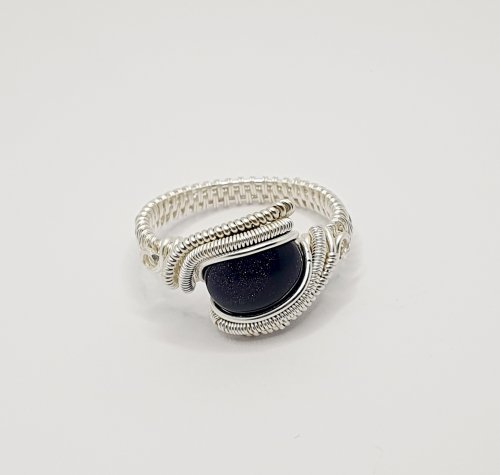
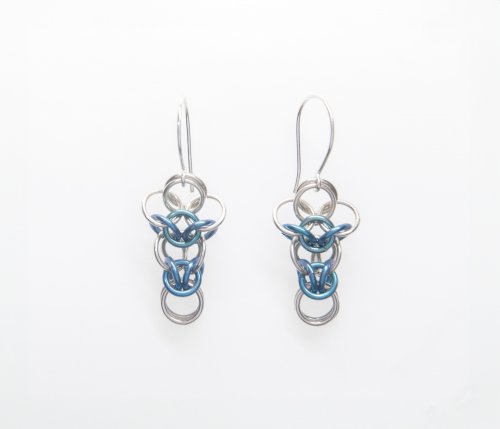
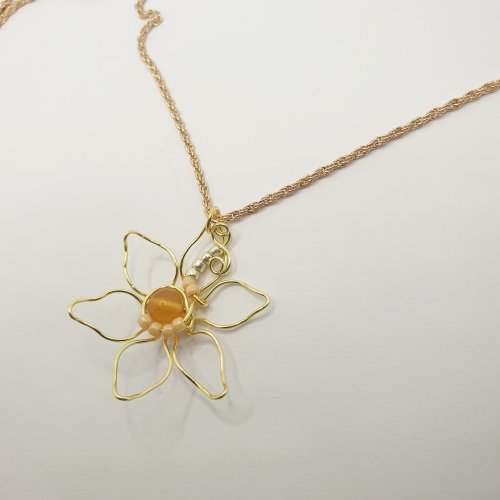

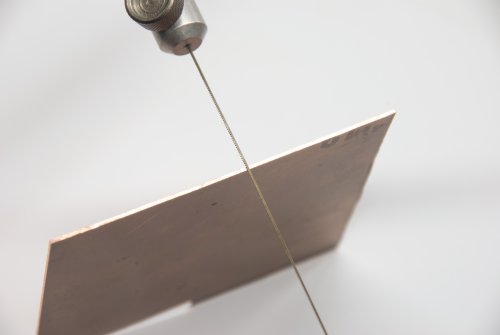
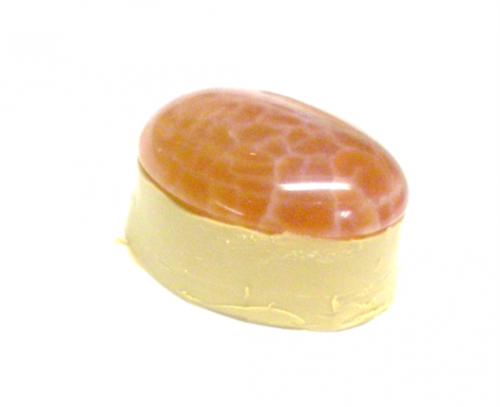
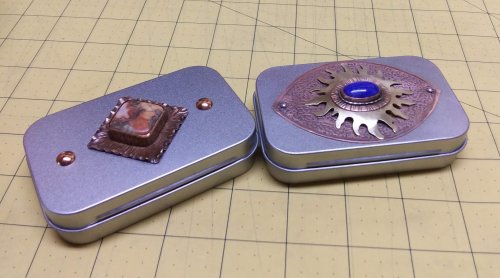
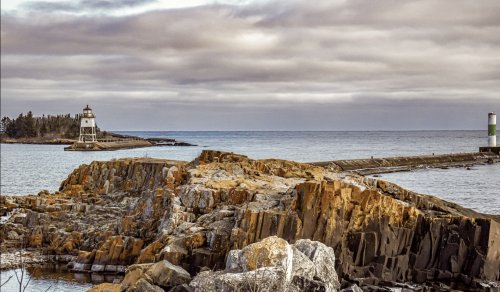
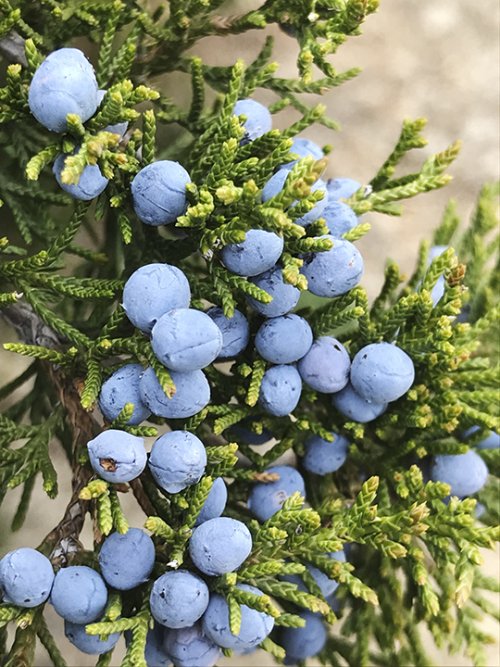
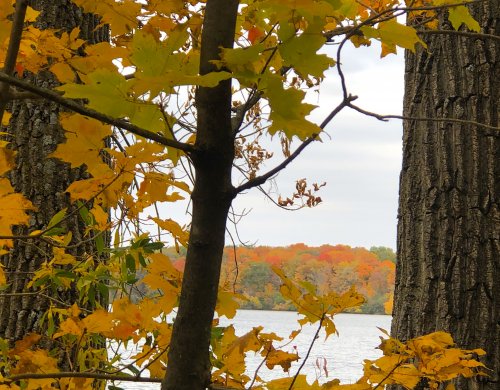

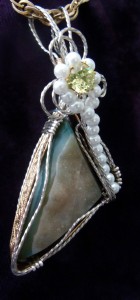

 About Jewelry Chain- About Ball Chain
About Jewelry Chain- About Ball Chain About Jewelry Chain- Snake Chain and Omega Chain
About Jewelry Chain- Snake Chain and Omega Chain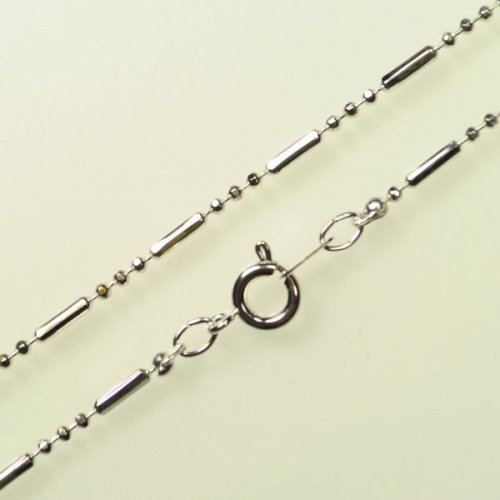 About Jewelry Chain- Bar Chain and Peanut Chain
About Jewelry Chain- Bar Chain and Peanut Chain About Jewelry Chain - Cable Chain and Rolo Chain
About Jewelry Chain - Cable Chain and Rolo Chain About Jewelry Chain- Curb Chain and Gourmette Chain
About Jewelry Chain- Curb Chain and Gourmette Chain About Jewelry Chain- Figaro Chain
About Jewelry Chain- Figaro Chain About Jewelry Chain- Infinity Chain and Anchor Chain
About Jewelry Chain- Infinity Chain and Anchor Chain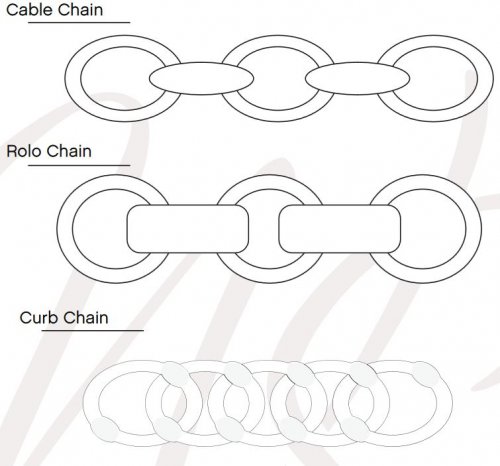 About Jewelry Chain- Chain Reference Sheet
About Jewelry Chain- Chain Reference Sheet About Jewelry Chain- Venetian Chain and Box Chain
About Jewelry Chain- Venetian Chain and Box Chain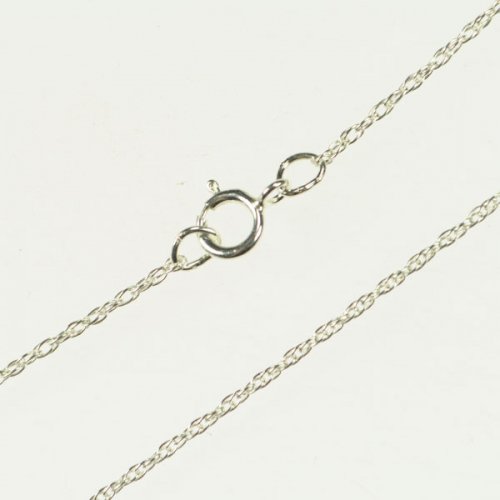 About Jewelry Chain- Wheat Chain and Rope Chain
About Jewelry Chain- Wheat Chain and Rope Chain Introduction to Chain
Introduction to Chain Access More Money by Making Jewelry When Your Prices Are Right
Access More Money by Making Jewelry When Your Prices Are Right An Introduction to Beads and Beading
An Introduction to Beads and Beading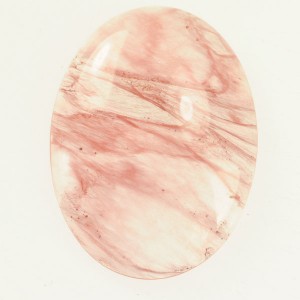 Common Gemstone Misconceptions
Common Gemstone Misconceptions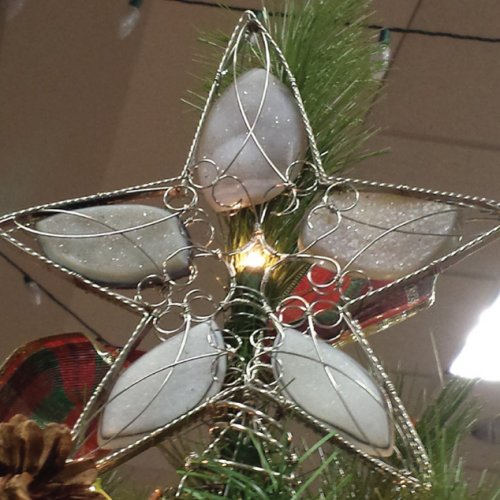 Wire Wrapped Christmas Tree
Wire Wrapped Christmas Tree How To Polish Metal Jewelry using a Rotary Tumbler
How To Polish Metal Jewelry using a Rotary Tumbler How To Polish Your Own Rocks using a Rotary Rock Tumbler
How To Polish Your Own Rocks using a Rotary Rock Tumbler How to Merchandise Your Jewelry on the Internet
How to Merchandise Your Jewelry on the Internet How to Use Twitter as a Wire Jewelry Artist
How to Use Twitter as a Wire Jewelry Artist 20 Ideas to get your Jewelry Biz Busy
20 Ideas to get your Jewelry Biz Busy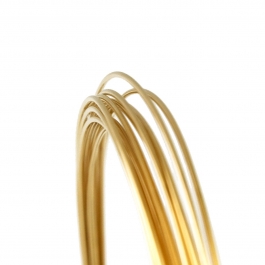 Watching the Precious Metals Market
Watching the Precious Metals Market Jewelry Design Ideas - Get Inspired
Jewelry Design Ideas - Get Inspired Measuring Tools
Measuring Tools July Birthstone - The Ruby
July Birthstone - The Ruby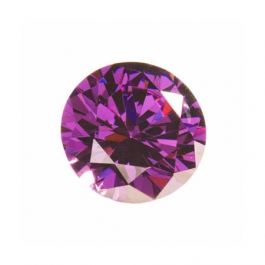 February Birthstone- Amethyst
February Birthstone- Amethyst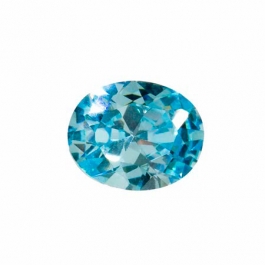 March Birthstone - Aquamarine and Bloodstone
March Birthstone - Aquamarine and Bloodstone September Birthstone - Sapphire
September Birthstone - Sapphire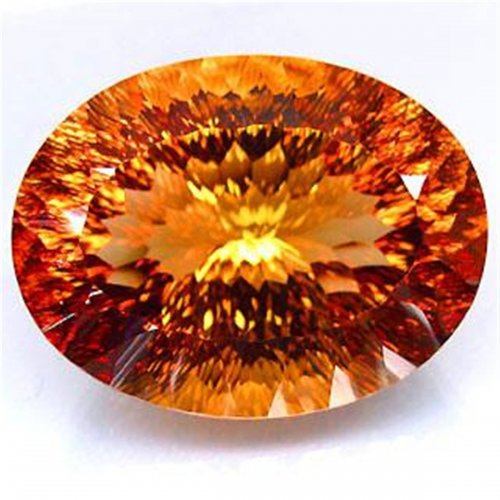 November Birthstones - Topaz and Citrine
November Birthstones - Topaz and Citrine October Birthstones - Rose Zircon, Pink Tourmaline and Opal
October Birthstones - Rose Zircon, Pink Tourmaline and Opal April Birthstone - The Diamond
April Birthstone - The Diamond August Birthstone - Peridot and Sardonyx
August Birthstone - Peridot and Sardonyx June Birthstones - Alexandrite, Pearl and Moonstone
June Birthstones - Alexandrite, Pearl and Moonstone Metalsmithing
Metalsmithing Featured Tool - Mini TruStrike Hammers
Featured Tool - Mini TruStrike Hammers Natural Jasper Stones - Cabochon Gemstones
Natural Jasper Stones - Cabochon Gemstones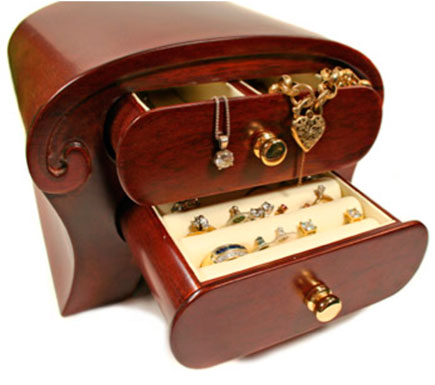 Organize Your Jewelry Box
Organize Your Jewelry Box Pearls- It's a Cultural Thing
Pearls- It's a Cultural Thing Soldering 101
Soldering 101 Starting Your Own Home Jewelry Business
Starting Your Own Home Jewelry Business The Art of Creating Chainmail
The Art of Creating Chainmail Why Should I Be Using Facebook
Why Should I Be Using Facebook Make Handmade Neck Cords on a Dime
Make Handmade Neck Cords on a Dime Tagging Handmade Jewelry Gifts
Tagging Handmade Jewelry Gifts Share Your Expertise with Your Community
Share Your Expertise with Your Community Creating Color Schemes for Jewelry Making
Creating Color Schemes for Jewelry Making Bronze, Brass, Nickel Silver and Copper Base Metals
Bronze, Brass, Nickel Silver and Copper Base Metals Gemstone Treatments
Gemstone Treatments How Wire is Made
How Wire is Made Beading A-B-C's
Beading A-B-C's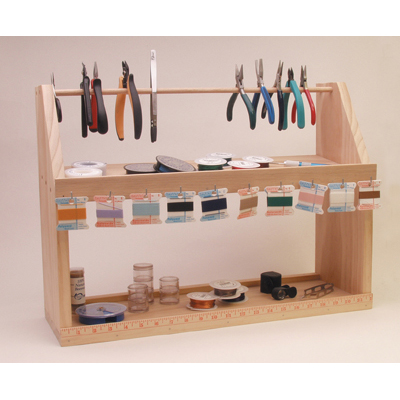 How to Set Up Your Workspace
How to Set Up Your Workspace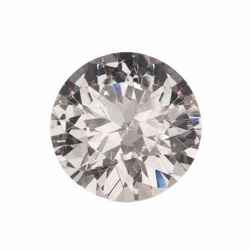 Gem Profile- Diamond
Gem Profile- Diamond Gem Profile- Peridot
Gem Profile- Peridot Gem Profile- Goldstone
Gem Profile- Goldstone Gem Profile- Cryptocrystalline Quartz Introduction
Gem Profile- Cryptocrystalline Quartz Introduction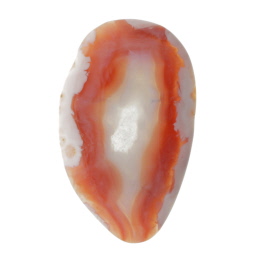 Gem Profile- Banded Agate and Brecciated Agate
Gem Profile- Banded Agate and Brecciated Agate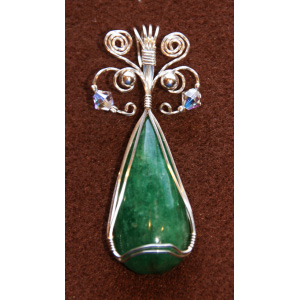 Gem Profile- Emerald
Gem Profile- Emerald Gem Profile- Titanite or Sphene
Gem Profile- Titanite or Sphene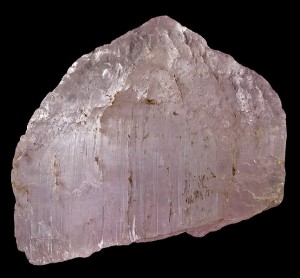 Gem Profile- Morganite
Gem Profile- Morganite Gem Profile- Desert Rose
Gem Profile- Desert Rose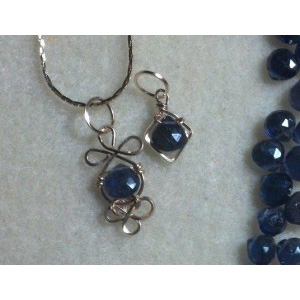 Gem Profile- Iolite
Gem Profile- Iolite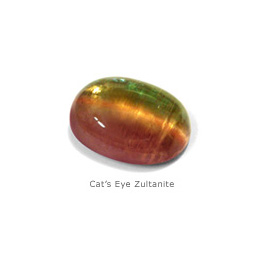 Gem Profile- Zultanite
Gem Profile- Zultanite Gem Profile- Maw Sit Sit
Gem Profile- Maw Sit Sit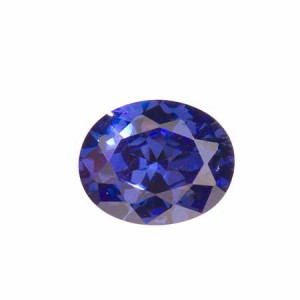 Gem Profile- Tanzanite
Gem Profile- Tanzanite Gem Profile- Aquamarine
Gem Profile- Aquamarine Gem Profile- Turquoise
Gem Profile- Turquoise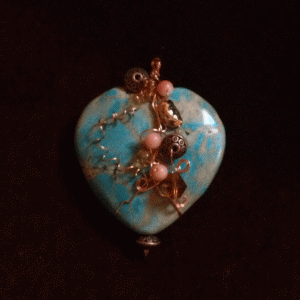 Gem Profile- Turquoise Types
Gem Profile- Turquoise Types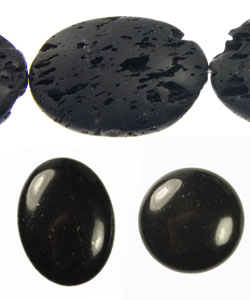 Gem Profile- Basalt
Gem Profile- Basalt Gem Profile- Fordite
Gem Profile- Fordite Gem Profile- Variscite
Gem Profile- Variscite Gem Profile- Pearls
Gem Profile- Pearls Gem Profile- Onyx
Gem Profile- Onyx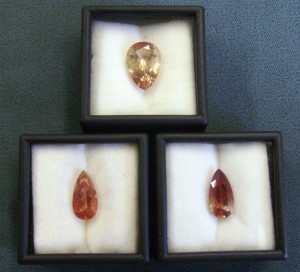 Gem Profile- Sunstone
Gem Profile- Sunstone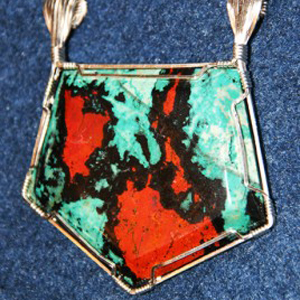 Gem Profile- Sonora Sunrise
Gem Profile- Sonora Sunrise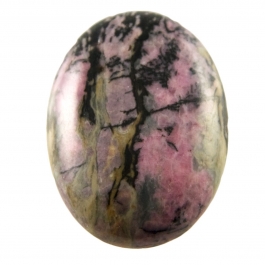 Gem Profile- Rhodonite
Gem Profile- Rhodonite Gem Profile- Glass, Crystal and Quartz
Gem Profile- Glass, Crystal and Quartz Gem Profile- Psilomelane
Gem Profile- Psilomelane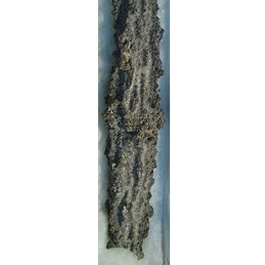 Gem Profile- Fulgurite
Gem Profile- Fulgurite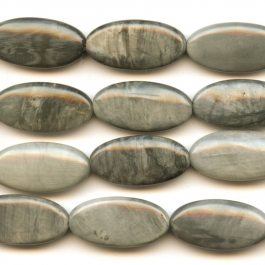 Gem Profile- Cat's Eye
Gem Profile- Cat's Eye Gem Profile- Carnelian
Gem Profile- Carnelian Gem Profile- Petoskey Stones and Indonesian Fossil Coral
Gem Profile- Petoskey Stones and Indonesian Fossil Coral Gem Profile- Rutilated Quartz
Gem Profile- Rutilated Quartz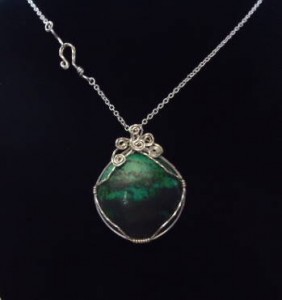 Gem Profile- Chrysocolla
Gem Profile- Chrysocolla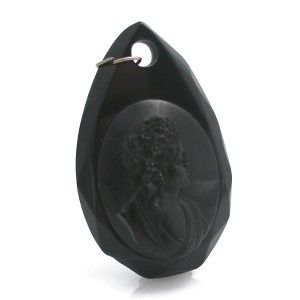 Gem Profile- Jet
Gem Profile- Jet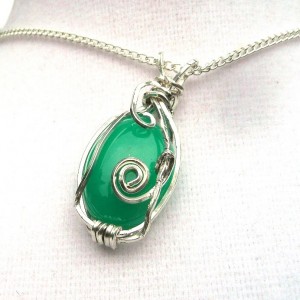 Gem Profile- Chrysoprase
Gem Profile- Chrysoprase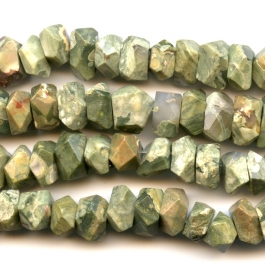 Gem Profile- Rhyolite
Gem Profile- Rhyolite Gem Profile- Chalcedony
Gem Profile- Chalcedony Gem Profile- Lepidolite and Sugilite
Gem Profile- Lepidolite and Sugilite Gem Profile- Unakite
Gem Profile- Unakite Gem Profile- Cowrie Shells, Conch Shells, and Drilling Shells
Gem Profile- Cowrie Shells, Conch Shells, and Drilling Shells Gem Profile- Mother of Pearl
Gem Profile- Mother of Pearl Gem Profile- Moss Agate and Plume Agate
Gem Profile- Moss Agate and Plume Agate Gem Profile- Thundereggs and Mexican Lace Agate
Gem Profile- Thundereggs and Mexican Lace Agate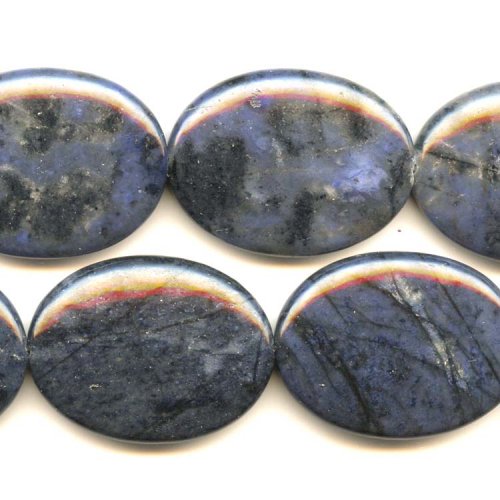 Gem Profile- Dumortierite
Gem Profile- Dumortierite Gem Profile- Apatite
Gem Profile- Apatite Gem Profile- Blue Topaz
Gem Profile- Blue Topaz Gem Profile- Aragonite
Gem Profile- Aragonite Gem Profile- Zircon and Cubic Zirconia
Gem Profile- Zircon and Cubic Zirconia Gem Profile- Topaz
Gem Profile- Topaz Gem Profile- Howlite
Gem Profile- Howlite Gem Profile- Sodalite
Gem Profile- Sodalite Gem Profile- Magnesite
Gem Profile- Magnesite Gem Profile- Cuprite
Gem Profile- Cuprite Gem Profile- Nuummite
Gem Profile- Nuummite Gem Profile- Bronzite
Gem Profile- Bronzite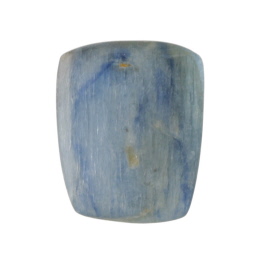 Gem Profile- Kyanite
Gem Profile- Kyanite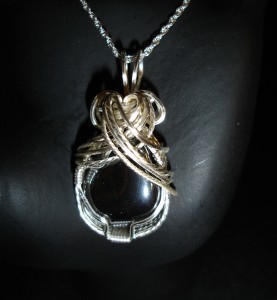 Gem Profile- Hematite
Gem Profile- Hematite Gem Profile- Derbyshire Blue John
Gem Profile- Derbyshire Blue John Gem Profile- Eilat Stone
Gem Profile- Eilat Stone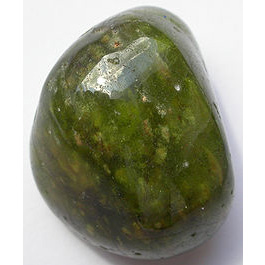 Gem Profile- Vesuvianite
Gem Profile- Vesuvianite Gem Profile- Strontium Titanate -Fabulite
Gem Profile- Strontium Titanate -Fabulite Gem Profile- Tourmaline
Gem Profile- Tourmaline Gem Profile- Larimar
Gem Profile- Larimar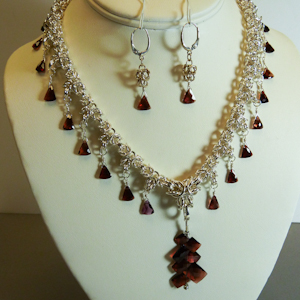 Gem Profile- Garnet
Gem Profile- Garnet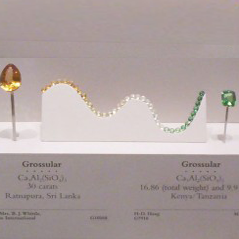 Gem Profile- Tsavorite and Green Garnets
Gem Profile- Tsavorite and Green Garnets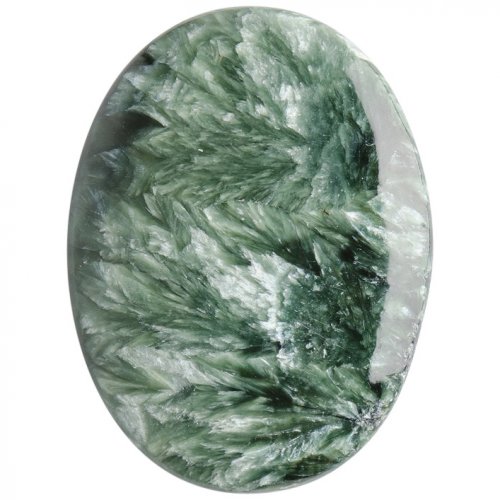 Gem Profile- Seraphinite
Gem Profile- Seraphinite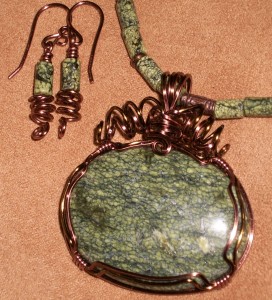 Gem Profile- Serpentine
Gem Profile- Serpentine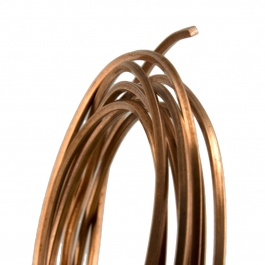 American Wire Gauge
American Wire Gauge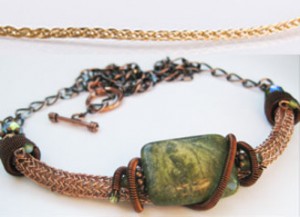 Viking Knit and Spool Knit Chain
Viking Knit and Spool Knit Chain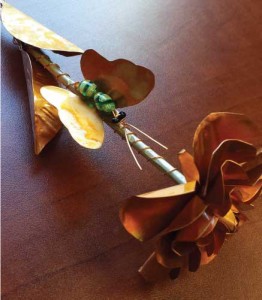 Copper Roses
Copper Roses How to Make Medical ID Bracelets Special
How to Make Medical ID Bracelets Special Remembering the Fallen
Remembering the Fallen 6 Ways to Find Your Uniqueness in Jewelry
6 Ways to Find Your Uniqueness in Jewelry Gem Profile- Moissanite
Gem Profile- Moissanite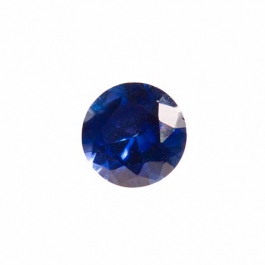 Birthstone Swarovski Colors
Birthstone Swarovski Colors Gem profile- Paua and Abalone
Gem profile- Paua and Abalone Tips for Tucson Shopping- Gem Show Secrets
Tips for Tucson Shopping- Gem Show Secrets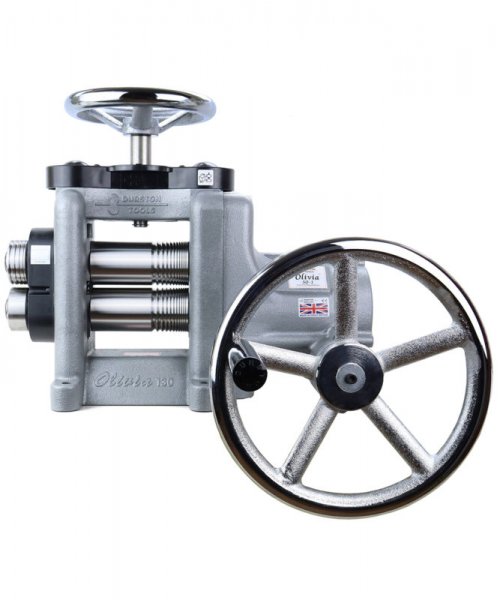 Durston Olivia Rolling Mills
Durston Olivia Rolling Mills How to Use a Jewelry Bench Polisher Effectively
How to Use a Jewelry Bench Polisher Effectively 
